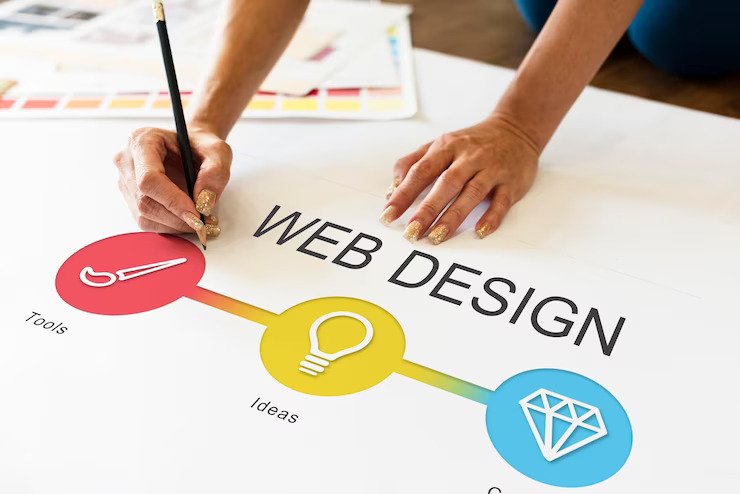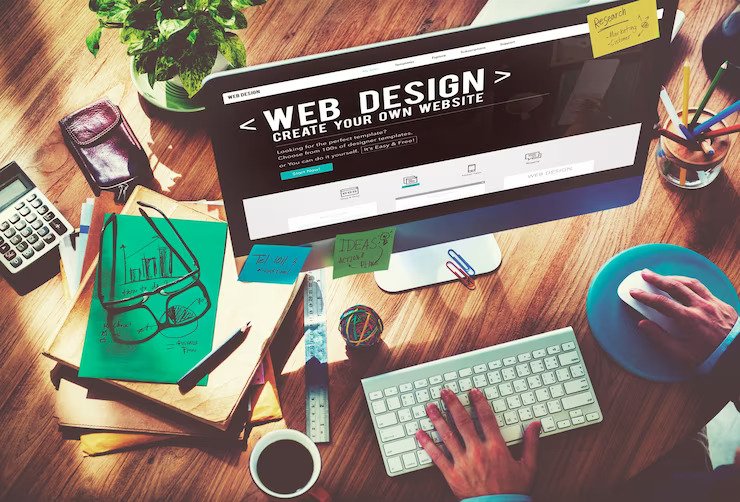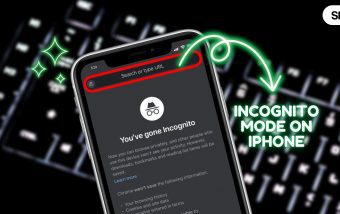How To Know If Someone Blocked You On iMessage? 5 Secret Hacks!
Apr 16, 2025

Apr 16, 2025

Apr 16, 2025

Apr 15, 2025

Apr 11, 2025

Apr 11, 2025

Apr 11, 2025

Apr 08, 2025

Mar 29, 2025
Sorry, but nothing matched your search "". Please try again with some different keywords.

Landing pages are essential for every online marketing campaign, but not all are effective. Engaging landing pages requires understanding your audience, writing compelling copy, and using design elements that encourage action. Here are some proven techniques for creating engaging landing pages.
Do you want your website to reach new heights? With expert web design brisbane services, you can create engaging landing pages that increase conversions! These web design professionals can provide custom web design solutions for all your requirements. They understand that creating an engaging landing page requires a captivating design, copy, and user experience.

Here are some essential factors to consider:
To develop the perfect landing page for a campaign, you must determine who you want to target. Demographic research can assist you in determining your target audience’s age, gender, region, and interests. You must also identify their pain points, which are the problems they are attempting to address or the goals they are trying to achieve.
Creating a message for your target audience entails employing language that speaks to their needs and resonates with them. It is critical to emphasize advantages rather than features; tell them how your product or service will improve their lives rather than just what it does.
As your headline is the first thing visitors will see, it must be attention-grabbing and compelling. The finest headlines are brief, to the point, and focused on the primary advantage of your service. Adding a deadline or a limited-time offer helps create a sense of urgency. A/B testing various headlines will help you identify the best-performing option.
Understanding eye-tracking patterns is essential for building a functional layout. Visitors will typically look to the upper-left corner first, then over the top of the page, and then down the left side. The “fold” refers to the page area seen without scrolling – placing your most crucial material here is critical. Design simplification can also increase user experience and conversions.
Your call to action (CTA) drives visitors to take action, whether it’s completing a purchase, filling out a form, or scheduling a consultation. Focus on clarity, urgency, and contrast when creating an effective CTA. Choosing the correct size and placement for your CTA; for example, positioning it above the fold and using a contrasting color will increase exposure. A/B testing might also assist you in optimizing your CTA.
The area around design elements on a page is known as white space, sometimes negative space. The advantages of using white space include enhanced reading, clarity, and a more modern appearance. Using white space effectively emphasizes essential items, creates contrast, and directs the user’s attention to your CTA.
Visual information may be extremely powerful at catching attention and quickly delivering concepts. Visual hierarchy implies directing the user’s attention to significant content using design elements such as color, size, and positioning. High-quality photographs are essential for achieving a professional appearance, and selecting the appropriate type of visual – such as infographics or product photos – may make a significant difference.
The concept of social proof states that people are more likely to act if they observe that others have already done so. Customer testimonials, reviews, and social media shares are examples of social proof. Using social proof effectively is selecting the appropriate type for your audience and strategically placing it on your landing page.
The user experience, or UX, is the ease with which visitors can interact with your landing page. A better user experience can increase conversion rates because users are more likely to take the intended action. Mobile optimization requires designing for smaller screens and touch-based interaction, whereas speed optimization ensures that your page loads rapidly.
The text on your landing page is known as copywriting. When creating persuasive content, pay attention to emotional triggers, use evocative language, and convey a sense of urgency. Headlines, subheadings, and bullet statements comprise the elements of persuasive copywriting. Consider using anecdotes, addressing arguments, and forceful language when writing persuasive copy.
Quizzes, calculators, and sliders are all examples of interactive design elements that visitors can use. The benefits of interactivity include getting more people involved, making things more personal, and gathering data. You need to know your audience and what interaction will work best to choose the right interactive element.
Perform A/B testing by comparing two landing page versions to see which works better. You should test headlines, CTAs, graphics, layout, and writing. For A/B testing, a tool like Google Optimize can be used to track success and make changes based on the data.
Measuring performance means keeping track of indicators like conversion rate, bounce rate, and time on the page. Google Analytics, Hotjar, and Crazy Egg are great tools for measuring performance. Analyzing data to optimize your landing page means finding areas that want development and making changes accordingly.
Creating a sense of urgency can be a powerful motivator for visitors to take action. Using a deadline, a limited-time offer or scarcity successfully means creating urgency. Examples of successful use of speed include “Only 2 seats left!” and “Sale ends in 24 hours.”
Personalized messaging means adapting your message to different segments of your audience. Improved relevance and higher conversion rates are two benefits of customized messaging. Personalizing messages involves utilizing data such as location, behavior, and previous encounters to produce tailored content. Examples of excellent personalized messaging include “Welcome back, Sarah!” and “Based on your interests, we thought you might like this offer.”
Videos can be very good at getting people’s attention and quickly explaining difficult ideas. Using video on landing pages means keeping it short and focused, including comments for people who don’t want or can’t watch with sound and a strong CTA within the video. Incorporating videos can increase interaction, boost conversion rates, and improve your SEO.
The good things that will happen to the person who uses your product or service are called benefits. Features are the precise details of what your product or service does. Focusing on benefits instead of features means using language that discusses what’s in it for the user instead of just what the product does. Focus on benefits successfully is to identify the pain points of your target audience and present your product or service as the solution.
Trust signals are design elements that help build trust with your audience. These include security badges, customer logos, and awards. Examples of effective use of trust signals include “As featured in the Wall Street Journal” or “Rated 4.8 stars by our customers.” The importance of trust signals means that trust is essential for converting visitors into leads or customers.
Creating an engaging landing page requires time and effort. You can boost sales and conversions by better understanding your target audience. It may also use effective design and content elements while closely observing performance. With the help of these strategies, you can make engaging landing pages that attract visitors, convey persuasive messages, and increase conversions. To maintain your competitive edge, frequently test, assess, and enhance your landing pages.
Read Also:
Arnab is a professional blogger, having an enormous interest in writing blogs and other jones of calligraphies. In terms of his professional commitments, He carries out sharing sentient blogs.
View all Posts
How To Know If Someone Blocked You On iMessag...
Apr 16, 2025
7 Website Design Mistakes That Are Hurting Yo...
Apr 16, 2025
Programmable Dynamic SEO for Location-Based P...
Apr 15, 2025
Google Boba Game: How To Play This Fun Game B...
Apr 11, 2025
Which Is The Best Video Search Engine Of 2025...
Apr 11, 2025


